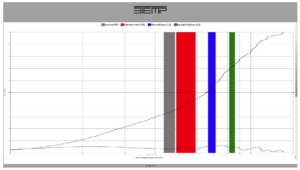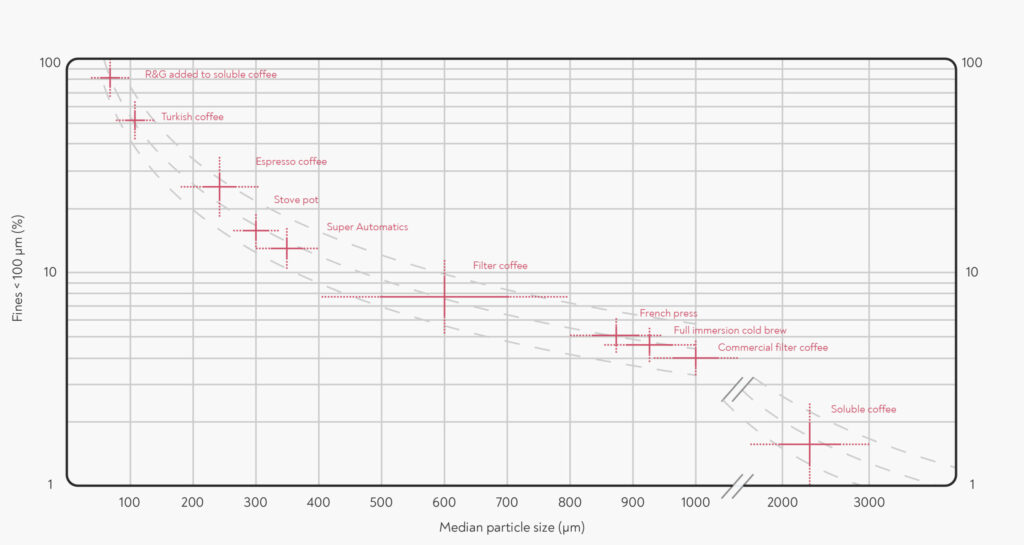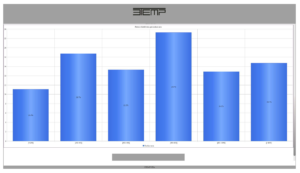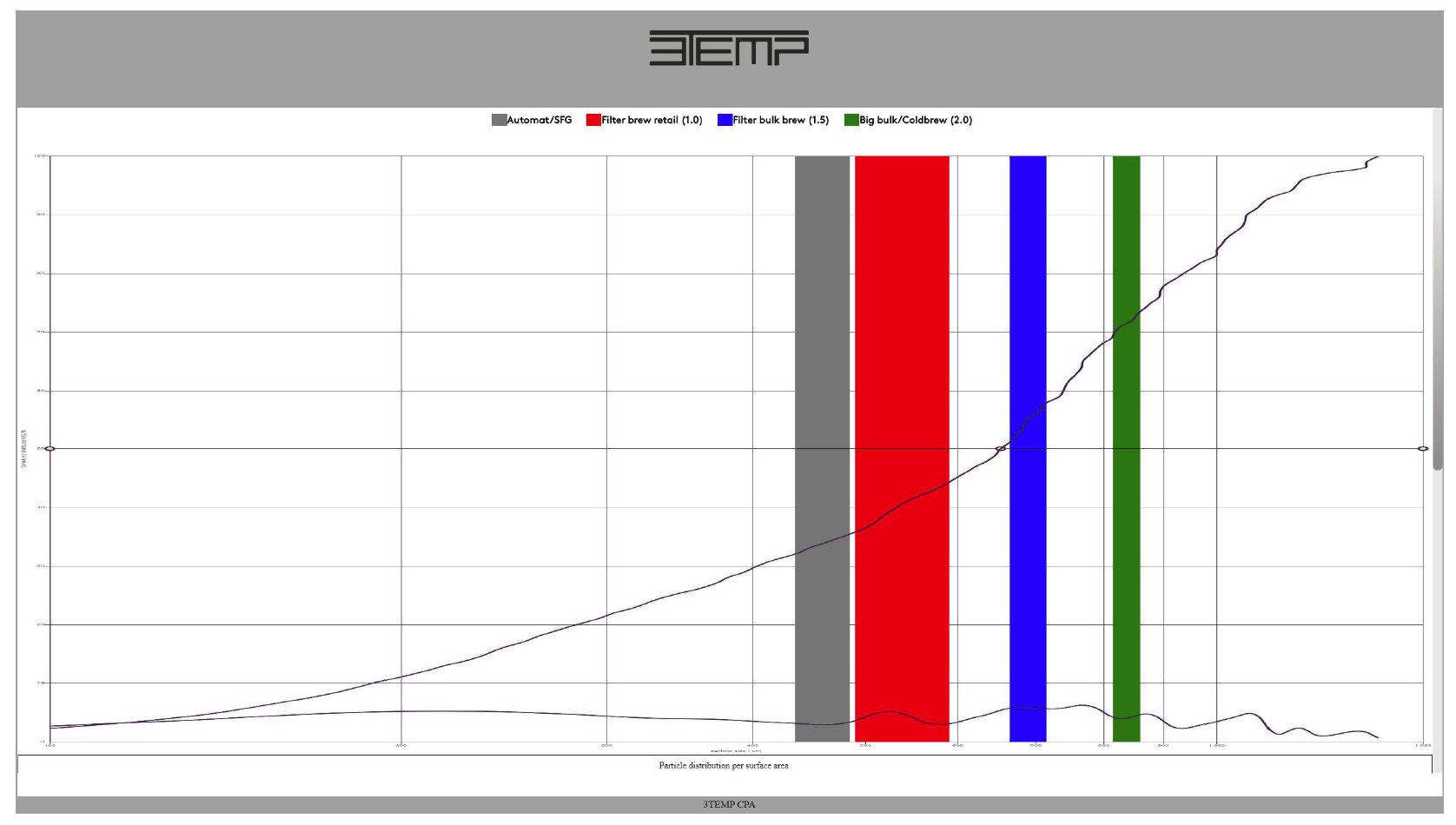3TEMP – CPA – Coffee Particle Analyser, part two
As the speciality coffee industry continues to grow and reach new audiences, technology and innovation continue to provide professionals with exciting solutions for achieving quality. The Coffee Particle Analyser from 3TEMP is the latest tool that may redefine and elevate standards currently accepted amongst professionals regarding grinding. By enabling its users a greater level of insight and accuracy when analysing coffee particle size distribution, with the CPA, understanding particle analysis and its role in coffee could become as omnipresent as other tried and accurate measurements such as TDS (total dissolved solids) and extraction.
 But what is the CPA, what is particle analysis, and how does it work? Read on to learn more.
But what is the CPA, what is particle analysis, and how does it work? Read on to learn more.
When it comes to the quality of coffee, it may come as no surprise to learn that little things can make a big difference. At every step of the value chain, there are opportunities to preserve and increase it. From processing to washing to drying, to storing, to roasting, grinding and brewing, it is by being aware of the details and how different approaches can affect the result which can ultimately lead to more understanding and progress in the industry.
The grinding step is a critical part of the process when it comes to preparing a quality brew—as such, investing in and maintaining a decent grinder is essential whether you are operating a coffee business or are a passionate home brewer. The reason for this is because, with a more consistent or even grind, there is an increased possibility of unlocking the chemical compounds created during the roasting process. This is why a burr grinder can lead to a much better coffee experience than a blade grinder, as the former truly grinds the coffee while the latter chops beans into noticeably unevenly sized pieces resulting in uneven extraction and less balance of flavour.
In the end, a better grind leads to a better cup of coffee. Unless you want to invest in bulky and expensive equipment, typically found in a science laboratory, knowing what is happening at the grind level has primarily been a guessing game until now. Due to the increasingly wide variety of grinders available and the vast array of results concerning their grind size distribution, there is much variation to be explored and evaluated. Other variables in the coffee-making process, such as dose, yield, brew time and extraction, have all received a great deal of time in the spotlight. It might now be time for an undoubtedly pivotal aspect of coffee brewing to take centre stage.
So how does the Coffee Particle Analyser work?
Well, after the user has some ground coffee, a sample can be placed inside the spreader for photo analysis using the supplied dosing tool. Particles can then be spread across a white surface and captured in a single picture from different angles. Based on a surface area reading from the software, data is translated into a graph that tells the user the particles’ exact size and overall distribution (spread over the range of all sizes). Whether wanting to assess the performance of a grinder or the final brew, correlating the returned data with sensory aspects will help guide and inform the user. To do this, samples can be cupped and blind-tasted, just as with production-based cupping that would take place at a roastery. Over time, one would also be able to determine whether their grinder’s burrs (the cutting discs that crush the coffee) need replacing or if a new grinder should be considered.
 Due to varying levels of grinder performance—further affected by the volume of coffee being put through them—there will be a range of periods in which burrs will perform their best. To achieve optimum results, it is of paramount importance that they are kept sharp. Coffee ground with dull burrs can lead to an increase in clogging and a higher likelihood of channelling. On the other hand, with 3TEMPs Coffee Particle Analyser, an engineer can keep appropriate tabs on grinders in a simple manner when it comes to establishing if there is a problem with the quality of the grind.
Due to varying levels of grinder performance—further affected by the volume of coffee being put through them—there will be a range of periods in which burrs will perform their best. To achieve optimum results, it is of paramount importance that they are kept sharp. Coffee ground with dull burrs can lead to an increase in clogging and a higher likelihood of channelling. On the other hand, with 3TEMPs Coffee Particle Analyser, an engineer can keep appropriate tabs on grinders in a simple manner when it comes to establishing if there is a problem with the quality of the grind.
So who can benefit from the CPA?
Well, depending on who is using it, the tool has many possible applications. Whether you’re a coffee equipment manufacturer looking to build the right product, a quality-focused roaster, a chain that wants to maintain quality and consistency across multiple stores, or a barista who wants to further their coffee education and elevate their art, the small but sophisticated CPA is up to the job. Unlike other tools and technologies already out there, the CPA from 3TEMP is the first affordable and ultra-portable coffee grind measurement device available. It incorporates a patent pending optical sensor to measure the size of each coffee grind and provides users with a greater understanding whilst remaining simple to operate.
For any coffee professional striving to deliver the best quality grind, being more aware of particle size will significantly improve the chances of delivering the right results. In addition, the CPA could help users to understand how different particle size distributions contribute to varying results in the cup based on the actual brew style.

From this image (Blittersdorf and Klatt, 2016), we can see the median particle size (measured in µm) for a range of different brew styles. With the CPA, a user can go much deeper into particle size analysis for each brew method. This could prove invaluable when learning more about the various interplays between the two. For example, when it comes to espresso brewing, a certain percentage of fines are said to be ‘necessary to achieve a pressure build-up, body and a delicate crema despite the short extraction time.’
 Interestingly, some baristas have already started to explore how varying grind size distributions can affect layers in the cup by sifting out specific distributions from the same coffee. In this way, they have learned more about how these fines (tiny coffee particles) and boulders (larger coffee particles) can impact the final flavour. From an educational standpoint, this is another useful application for the CPA and, unlike other complicated optical-based methods, is straightforward to carry out as part of a focused test.
Interestingly, some baristas have already started to explore how varying grind size distributions can affect layers in the cup by sifting out specific distributions from the same coffee. In this way, they have learned more about how these fines (tiny coffee particles) and boulders (larger coffee particles) can impact the final flavour. From an educational standpoint, this is another useful application for the CPA and, unlike other complicated optical-based methods, is straightforward to carry out as part of a focused test.
The CPA is more than just a measuring tool to assess quality. It is a device that can empower us as coffee lovers to take pride in our work. Although other key brewing variables such as temperature, water, and TDS already have lots of solutions for exploring and analysing, until now, grind size distribution has been an area typically left for well-paid coffee scientists to study. With the CPA, a very high level of accuracy can be achieved without the need for bulky and expensive laboratory-style particle measurement devices.
If you want to brew a coffee with a more intense aroma, more clarity of flavour, sweetness, cleanliness or more brightness, grind size should undoubtedly not be an afterthought in your coffee quality control. Of course, as taste is mainly subjective and not always easy to measure, a tool like the CPA can provide the perfect opportunity for brewers to create and set their parameters and standards for what is acceptable when it comes to particle size distribution and a burr’s lifespan.
The meeting of technology, innovation and craftsmanship within the coffee industry may be the ideal combination to create sustainable change effectively. When the three are combined, we can make more informed choices and deliver quality with fewer headaches. While this is something that is continually evolving, it could well be the key to introducing more people to what great coffee can be.



